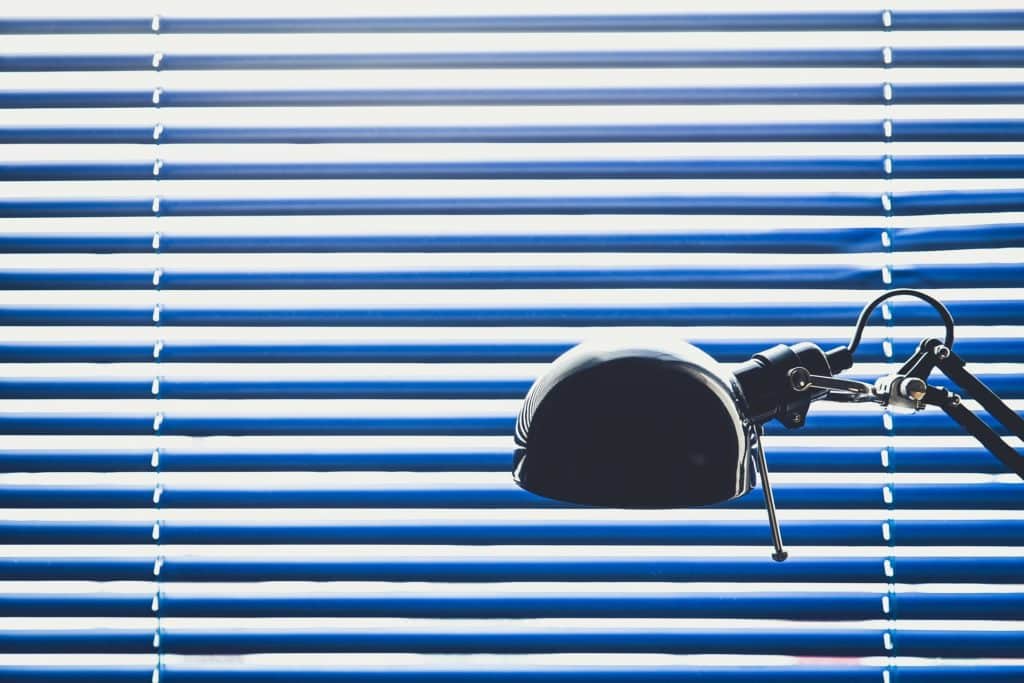If you’re committed to proper home office lighting, it’s time to consider some of the different options at your disposal. In this blog, we will detail the science that exists on light spectrums and its relation to productivity and focus.
We will also discuss some of the different home office setups and the lighting solutions that are best for each; whether your office has lots of natural light or not. We’ll also examine some of the lamp types we may utilize and their various benefits and drawbacks- so let’s go!
Understanding Light Spectrums
It is well known that light has an effect on our moods and even our personalities, primarily via it’s affect on by hormonal production. In turn, this affects our productivity. For most of us that’s something we would definitely like to improve!
When deciding how to light your home office it is best to understand how different types of light affect you. Using the right light in the correct space can have a much bigger impact than you may imagine. One of the most interesting factors influencing how we work is the color temperature of the light sources we are exposed to most often.
These temperatures are measured in Kelvin, or (K) and can be categorized into three main ranges. These 3 are listed below and defined by their accompanying light color temperature:
- Lower color: range from red to yellow/white – warm colors (3,000K)
- Middle color: less range – cool white colors (3,000-4,600K)
- Higher color: blue-white – daylight colors (4,600k +)
Studies have shown that warm colors from the lower Kelvin range promote a sense of relaxation and comfort. These should be used in intimate settings and areas in your home to relax- think the bedroom, or a cozy den. The middle color range was measured to be more welcoming, similar to the lower range, yet still cool enough in light to promote alertness.
Think dining room, or living room. The higher color range is shown to improve alertness, productivity, and mood. Part of this is due to the lowering of melatonin production, which usually prompts sleepiness and fatigue.
As such the higher color range is the optimal light temperature color to use in your work areas, like your home office desk. Within the higher color range, research finds cool blue light is the best for increasing these benefits.
Offices With Access to Natural Light

Offices with access to lots of natural light fall perfectly on the scale of the higher color range. This has been recognized by many office designers and architects, who more and more frequently are setting offices up with this in mind. They have begun adding large skylights, and swapping walls for windows in order to harness these valuable benefits.
Most of us can’t knock down our walls in favor of glass panes (nor would we want to given the cost of home heating/cooling!), but you should pay attention to where you receive the most sun throughout the day at home, and if possible have your work area be there.
The added energy and improvement it will have on your mood will make all the moving worth it, not to mention your productivity! Getting all the natural light you need throughout the day is a privilege in the world of home offices- what about lighting solutions for those of us stuck in the shade?
Offices Without Access to Natural Light

Some of us just by chance don’t have much access to natural light in our home, those of us in cities especially. What can we do? Well as it turns out, quite a lot of the benefits of natural light can be found within artificial lights that mimic natural lighting via spectrum design.
Blue light has the same effects as daylight: it diminishes fatigue, ups focus, improves productivity, and reduces eye strain. Outfitting your home with blue light sources in your workspace is the next best thing to removing the roof in favor of glass.
Overall, it’s better to use task lighting, like desk lamps and standing lamps rather than overhead lamps. This is because overhead lamps often cause glare and eye strain in the workspace. Task lamps should be set up to not cast a shadow on your work, as they are used for specific activities, generally detailed work.
Task lighting alone can quickly give you eye strain because it’s directed light; so it’s important to add more light if you use one. Eye strain can be combated when paired with ambient lighting. Ambient lighting will help soften the sharp light that can come from an overhead light, not to mention the direct light from your computer screen.
Supplementing ambient lighting might sound like you’re beginning to need a lot of different lights… luckily, BIOS has addressed this issue with our SkyBlue light bulbs. Below we will discuss how this product can address many of your lighting concerns (and cut down on the need for many different lights).
Personal Lighting Solutions
BIOS SkyBlue bulbs emit specific wavelengths of light to regulate your circadian rhythms as nature intended. This very same technology was originally developed to light up the International Space Station- a place where lighting space and functionality is at a premium. How does the SkyBlue offer so much in one bulb? There is a daytime and nighttime wavelength setting within the light- calibrated to follow a set 24 hour pattern.
During the daytime, the SkyBlue produces the blue light spectrum that is critically responsible for improving focus, productivity, and boosting your mood. At nighttime, the SkyBlue bulbs dim to ambient light, a warm amber color, removing all the blue light for the best nighttime lighting solution. This creates a warmer atmosphere and promotes melatonin production and better sleep.
Many solutions exist to improve your home office lighting ideas, and the benefits are so profound that it’s well worth it to investigate what will work for you- and provide the lighting you need to gain all the benefits of a natural light cycle.
FAQs
- What type of light is best for us? Natural light! Barring that, you should attempt to find lighting solutions for your home and office that mimic natural light rhythms, which in turn help to regulate our circadian rhythm, or internal body clock.
- What is the difference between warm and cool light? Warm light refers to light that is red to yellow/white in tone, with a temperature of 3,000 Kelvins- the kind of light we see in the evening. Cool light refers to blue-white colors in the range of 4,600+ Kelvin, which we see during the day.
- What is the best location for my work desk? If possible, in direct sunlight-if you don’t have such access, you should seek out lighting solutions that allow you to replicate daylight- typically bulbs or table lamps that can mimic the cool, blue light spectrum.
- How should I light my home office? You should be using cool, blue spectrum lighting that mimics daylight! This boosts productivity and staves off melatonin production, which can make you sleepy.


